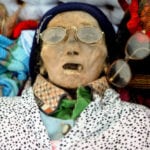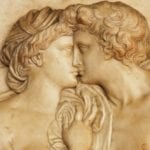 Creepy
Creepy  Creepy
Creepy  Technology
Technology 10 Scientific Breakthroughs of 2025 That’ll Change Everything
 Our World
Our World 10 Ways Icelandic Culture Makes Other Countries Look Boring
 Misconceptions
Misconceptions 10 Common Misconceptions About the Victorian Era
 Mysteries
Mysteries 10 Strange Unexplained Mysteries of 2025
 Miscellaneous
Miscellaneous 10 of History’s Most Bell-Ringing Finishing Moves
 History
History 10 Great Escapes That Ended Right Back in Captivity
 Weird Stuff
Weird Stuff 10 Fascinating Things You Might Not Know About Spiders
 Food
Food 10 Everyday Foods You Didn’t Know Were Invented by the U.S. Military
 History
History 10 Odd Things Colonial Americans Kept at Home
 Creepy
Creepy 10 More Representations of Death from Myth, Legend, and Folktale
 Technology
Technology 10 Scientific Breakthroughs of 2025 That’ll Change Everything
 Our World
Our World 10 Ways Icelandic Culture Makes Other Countries Look Boring
Who's Behind Listverse?

Jamie Frater
Head Editor
Jamie founded Listverse due to an insatiable desire to share fascinating, obscure, and bizarre facts. He has been a guest speaker on numerous national radio and television stations and is a five time published author.
More About Us Misconceptions
Misconceptions 10 Common Misconceptions About the Victorian Era
 Mysteries
Mysteries 10 Strange Unexplained Mysteries of 2025
 Miscellaneous
Miscellaneous 10 of History’s Most Bell-Ringing Finishing Moves
 History
History 10 Great Escapes That Ended Right Back in Captivity
 Weird Stuff
Weird Stuff 10 Fascinating Things You Might Not Know About Spiders
 Food
Food 10 Everyday Foods You Didn’t Know Were Invented by the U.S. Military
 History
History 10 Odd Things Colonial Americans Kept at Home
10 Strange And Obscure Incidents From The Cold War
The Cold War was a period of distrust and hatred between the western Allies (most notably the United States) and the members of the Eastern Bloc, specifically the Soviet Union. While there was distrust between both sides during World War II, it became more pronounced after the war and lasted until the early ’90s, when the Soviet Union broke up.
While events like the Cuban missile crisis gained a lot of media attention, there were still several incidents that didn’t. But it was the little-known incidents that showed how desperate, funny, and stupid both sides were during the “war.”
10The Checkpoint Charlie Standoff
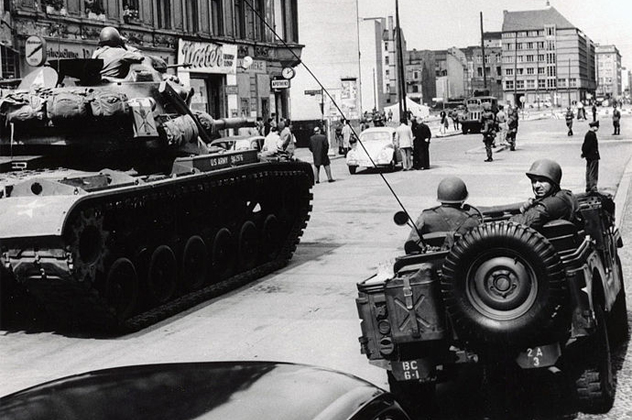
Aside from the Cuban missile crisis, the closest the US and Soviet Union came to starting World War III was on October 27, 1961, when US and Soviet tanks faced each other in Berlin, Germany. After World War II, the Soviet Union, UK, US, and France divided Germany into four regions, each controlled by one of the four countries. Berlin, which fell under the region controlled by the Soviet Union, was also divided into four regions, each of which was also controlled by one of the four countries.
After the Allies rebuffed attempts by the Soviet Union to build the Berlin wall, Soviet and East German troops began denying Allied diplomats access to Berlin. Trouble began on October 22, 1961, when East German soldiers stopped a US diplomat from going into Berlin. US general Lucius Clay then ordered that the next US diplomat going into Berlin must do so with a military escort. The next diplomat passed through Checkpoint Charlie into Berlin with military escorts, although the East German soldiers showed some nonviolent resistance. General Clay then ordered the deployment of tanks at the checkpoint.
Ten US M48A1 tanks and three M59 armored vehicles were sent to the checkpoint and were soon joined by Soviet tanks. Tanks from both sides remained like this for the next 16 hours with their guns aimed at each other. The Soviets later pulled back one of their tanks, and the US did the same. This continued until all the tanks left the checkpoint.
9The Flight Of Mathias Rust
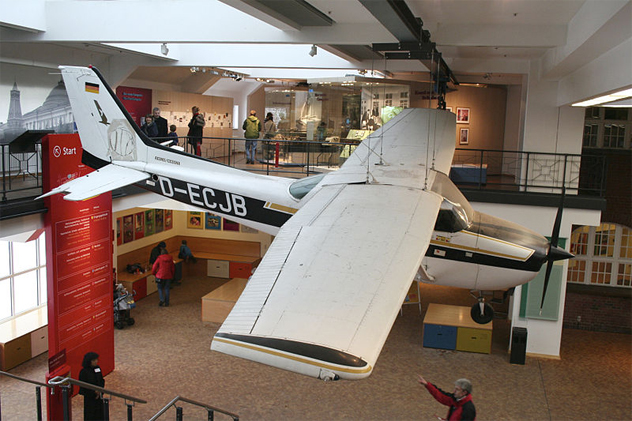
Mathias Rust wasn’t military personnel or a spy. He was just a novice pilot who flew a Cessna airplane from West Germany to Moscow so that he could deliver a 20-page manifesto on how to promote peace in the world to the new Soviet leader, Mikhail Gorbachev.
On May 13, 1987, Mathias took a Cessna from his flying club and flew to the Shetland Islands and then Finland, where he refueled and began his journey to Moscow. Three Russian Air Defense units were put on alert and two interceptors were scrambled as Mathias’s Cessna flew close to the Soviet coastline. One of the interceptor pilots reported that the airplane looked like a Yak-12 (a Soviet sports plane) and left him alone.
He was then intercepted by two other interceptors, which came close to him but failed to notice the West Germany flag and registration number on his airplane. An Air Defense unit that spotted him thought he was a trainee pilot who’d forgotten to turn on his airplane transponder. Two more Soviet airplanes intercepted him but left after their commander felt it was too dangerous for them to fly at such low altitude. A radar station also spotted his airplane, but the controller believed that he was one of the two helicopters performing search-and-rescue operations nearby.
It was only when Mathias flew into Moscow and landed in the Red Square close to the Kremlin—the official residence of the Soviet president—that the Soviets realized that something was terribly wrong. He was arrested by Soviet security forces who believed him to be part of a larger cell aimed at disorganizing the Soviet Union.
Several Soviet military commanders, including the Defense Minister and the commander of the Air Defense Forces, were either fired or disciplined. Mathias himself spent 18 months in prison for breaching Soviet airspace, but back home, he became an instant hero.
8Oleg Lyalin: The Dumbest KGB Spy Ever

Oleg Lyalin was a Soviet KGB spy disguised as a Russian trade delegate in Britain. He was arrested in Britain in August 1971 after he was pulled over by a police patrol vehicle at night for driving without his lights and swerving dangerously. Oleg was found to be drunk and was put in the backseat of a police vehicle, where he sat with his legs placed on the arresting officer’s shoulder. When he was ordered to remove his legs, he replied by saying, “You cannot talk to me, you cannot beat me, I am a KGB officer.” The two policemen, who did not take his statement seriously, took him to the station, where he refused blood, breath, and urine tests.
He appeared in court on charges of drunk driving only to be bailed out by his “colleagues,” who were also part of the trade delegation. As it turned out, Oleg actually was a KGB spy and had been sneaked into Britain as part of a Soviet trade delegation. Oleg eventually defected to Britain, providing them with valuable information. In the end, over 105 members of his trade delegation, along with several Russian diplomats, were expelled from Britain for being spies.
7Nikita Khrushchev And Disneyland
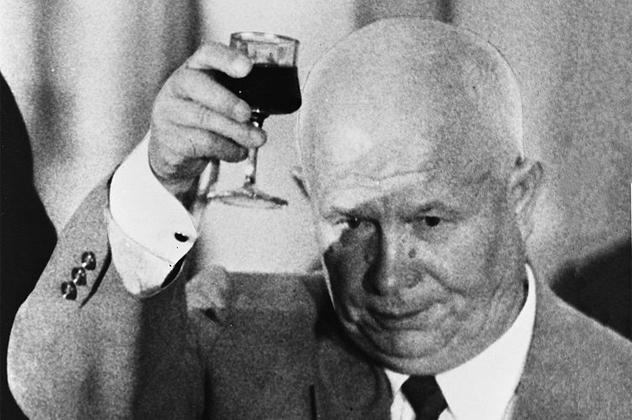
In 1951, Soviet leader Nikita Khrushchev visited the United States for a meeting with President Eisenhower. During his visit, he went to Hollywood and toured the 20th Century Fox studio and met with a few popular actors. Trouble began when Spyros Skouras, the president of 20th Century Fox and an anti-communist, said that Los Angeles was not interested in burying anyone but would do so if it became necessary. The statement was made in response to Nikita’s well-known statement about the Soviet Union burying capitalism. Nikita lost his temper, saying that Spyros’s statement was an American attempt to insult and ridicule him.
The highlight of Nikita’s visit came when US government officials informed him that he would not be allowed to visit Disneyland because the crowd there posed a security threat to him. Nikita was outraged about the apparent lack of security, saying, “What do you have there—rocket launching pads? Is there a cholera epidemic down there? Have gangsters taken control of the place? Your police are strong enough to lift up a bull; surely they are strong enough to take care of gangsters?” Unknown to him, the Los Angeles Police Department had a 73-page pamphlet detailing nothing but how to keep him secured during his stay in the US.
6Operation Monopoly

Operation Monopoly was a US government project to dig a tunnel under the Soviet embassy in the United States during the Cold War. In 1977, while the Soviets were busy building their embassy on Wisconsin Avenue in Washington, DC, the NSA and the FBI were building a tunnel under the embassy so that they could eavesdrop on the Soviets. The FBI also bought several houses in the area to be used as observation posts and to conceal the tunnel’s entrance.
The project was a total failure. Water often leaked into the tunnel, and the NSA’s high-tech equipment often failed to work. To complicate issues further, the agents inside the tunnel didn’t know where they were; for all they knew, they could have been listening to the storage room. In 1989, FBI double agent Robert Hanssen told the Soviets about the tunnel.
The FBI gave up and finally sealed the tunnel in the 1990s. Interestingly, in 1980, while the embassy and tunnel were under construction, the Soviet Union and United States traded blames over their embassies in Washington and Moscow respectively, with the US accusing the Soviets of spying on their embassy in Moscow.
5The Oleg Penkovsky Affair
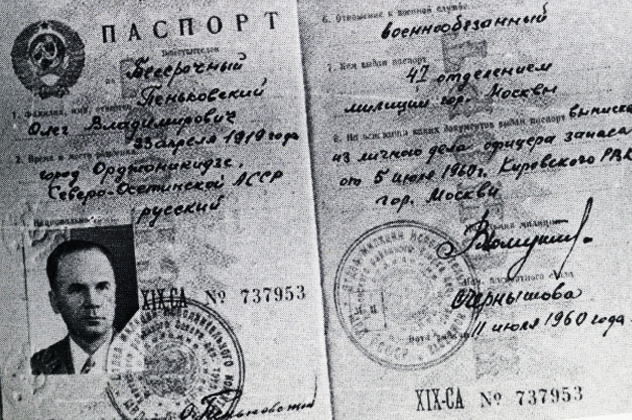
Colonel Oleg Penkovsky was a top-ranking officer in the Soviet Intelligence Services (GRU) who doubled as a spy for the United States and Britain. It was Oleg who informed the United States about the presence of Soviet nuclear missiles in Cuba (the Soviet Union had believed that by the time the US detected the nuclear missiles, it would have been too late). He also gave the US detailed information about the Cuban launch sites.
He is credited with changing the course of the Cold War because he informed John Kennedy about the nuclear warheads three days before they became fully functional, giving Kennedy enough time to take action. He also informed the US that their nuclear and missile systems were superior to those of the Soviet Union. Oleg spied for the United States and Britain because he felt that he was often maligned by other Soviet officers due to the fact that his father had supported the czar during the Russian Civil War. He was arrested by the Soviet KGB on October 22, 1962, and was sentenced to death after a highly publicized trial. He was executed in May 1963.
4Defection Of Conrad Schumann
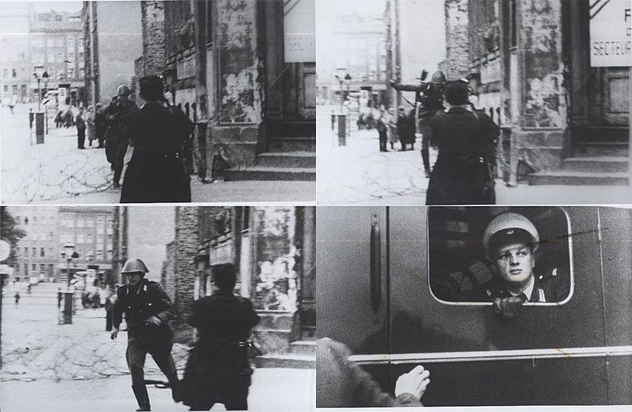
Conrad Schumann was an East German police officer who became popular for jumping the Berlin fence and escaping into West Germany. Conrad was guarding the Berlin Wall—which was then nothing but barbed wire—on 15 August, 1961, when he defected. A crowd of West Germans had been calling him, shouting: “Komm’ ruber,” meaning “come over.” After much deliberation, he threw away the cigarette he had been smoking and ran toward the fence, deliberately dropping his gun as he leaped over. He then hopped into a West German police vehicle which immediately drove him away.
Conrad’s story and photograph would serve as a source of propaganda for West Germany. Over 2,100 East German soldiers and police officers later followed his steps, defecting when they had the opportunity. The West Germans weren’t really interested in Conrad himself. Instead, they were concerned with the information they could get from him. He was reportedly “squeezed like a lemon” by his West German interrogators.
3Operation Able Archer 83
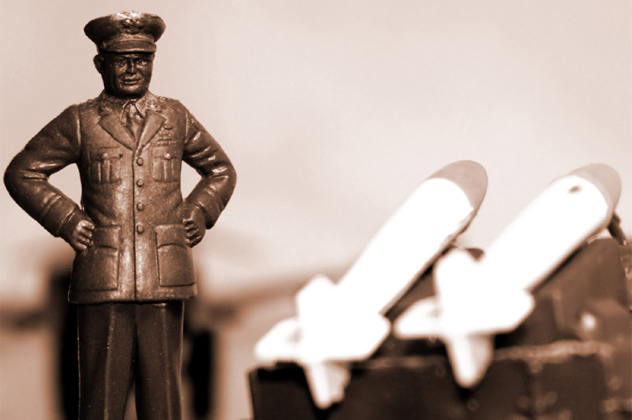
In November 1983, the United States and several of its allies launched Operation Able Archer, a war game. Although the operation was an innocent move by the Allies, it almost made the Soviet Union launch nuclear missiles at the US. The operation involved 40,000 NATO troops and a simulated nuclear attack on Finland, Greece, Yugoslavia, and Norway under the pretense that they had been attacked by Warsaw Pact countries. Several top US military officers and figures including the Secretary of Defense, Chairman of the Joint Chiefs of Staff, the vice president, and the president himself took strategic roles in the operation, which made the Soviets believe that it was a real attack.
In response to the possible attacks, the Soviet Union armed several of their military aircraft in East Germany and Poland with nuclear warheads. They also readied several missiles for launching and sent their nuclear-armed submarines to the Arctic region so that they would not be attacked by Allied forces. NATO observed all the preparations made by the Soviet Union, but they thought the Soviet Union was also playing war games.
2The Black Sea Incident Of 1988
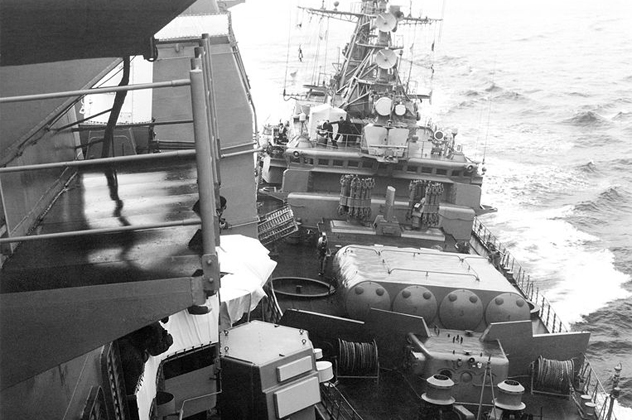
In 1988, United States cruiser USS Yorktown and a destroyer, USS Caron, sailed into Russian waters in Crimea. They were soon intercepted by two smaller Russian frigates—Bezzavetnny and SKR-6, which ordered them out of Soviet waters. The US ships refused to leave, claiming that they were in international waters, and they continued sailing toward Crimea. The Soviet Union claimed ownership of waters 19 kilometers (12 mi) from its coast, while the United States recognized 5 kilometers (3 mi). The Soviet ships did not want to shoot missiles at the American ships, so they did the best thing they could do in that situation: They rammed into the ships.
Bezzavetnny rammed into the USS Yorktown (pictured above), hitting it on its port side and damaging its harpoon launcher, helipad, and guardrails. SKR-6 also hit USS Caron on the port side, damaging its hull. Two Soviet-operated MI-26 helicopters were also flying over the US ships, preventing two US helicopters from taking off. All four ships were damaged in the incident, although there were no casualties.
1The Petrov Affair
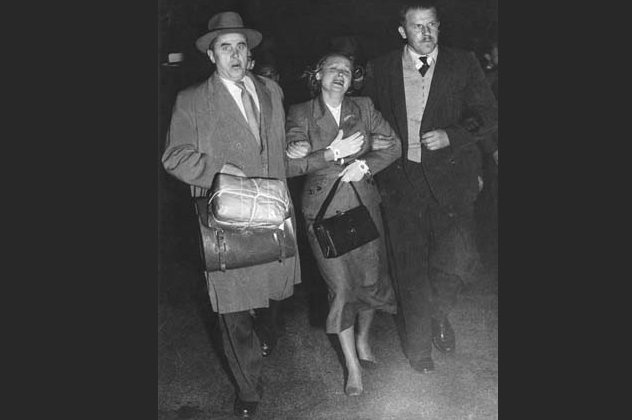
The Petrov Affair was a busted Soviet espionage operation in Australia that split the Australian Labor Party and subsequently changed Australian politics. At the center of the whole conspiracy were Vladimir Petrov and his wife, Evdokia Petrov. The duo, who were Soviet KGB spies, were sent to the Soviet embassy in Australia as members of staff in February 1951. Vladimir soon became friends with Dr. Michael Bialogusky, who himself was a spy for the Australian Security Intelligence Organization (ASIO).
For several months, ASIO used Bialogusky to convince Vladimir to defect, but Vladimir refused. He later defected after he and his wife were accused of running a cell in the embassy loyal to Lavrenti Beria, who had recently commanded the Soviet secret police but had fallen from power. This meant that if the couple ever returned to the Soviet Union, they might be killed. Vladimir finally decided to defect the same day the person to succeed him at the embassy arrived. He defected without informing his wife, who was placed under house arrest at the embassy. Two KGB agents later arrived in Australia to take her back to the Soviet Union. She was taken to the airport, where a crowd of staunch anti-communists had already gathered to rescue her while she was being dragged to the plane.
Australian authorities initially did not want to get involved in the issue, but they decided to step in after witnessing the crowd at the airport. Australian prime minister Robert Menzies ordered an ASIO agent to meet her at the airport and grant her asylum.
The two KGB agents were disarmed, and Evdokia was removed from their custody and taken to a safe house, where she also defected. The couple was reunited, but Evdokia still feared that her mother and sister would be killed by the Soviet Union. Their fate is unclear, giving this story a bittersweet ending.
Elizabeth is an aspiring writer. You can like her Facebook page and follow her on Twitter, where she will be dropping several mind-blowing, super-interesting facts every day.
